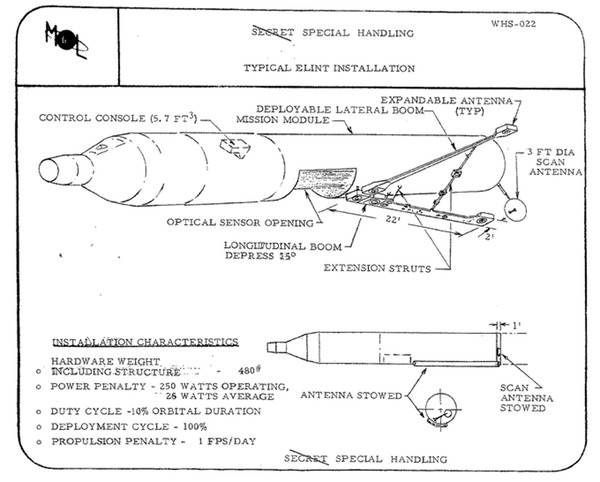Ear against the wall: The Manned Orbiting Laboratory and signals intelligenceby Dwayne A. Day
|
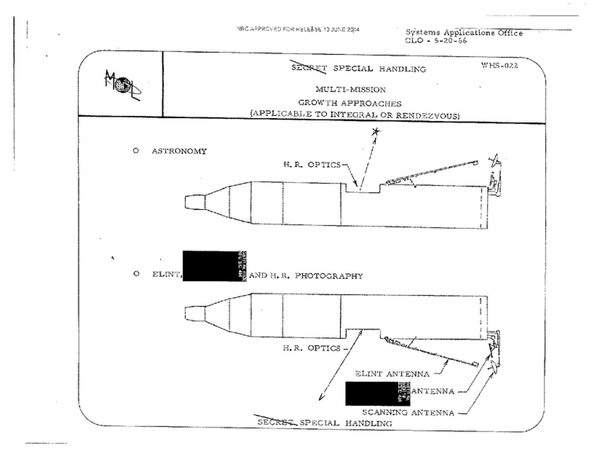 |
Although the history of MOL remains shrouded in classification, by 1965 the program assumed more of an operational—not experimental—purpose. MOL’s mission was to collect intelligence using its KH-10 DORIAN camera system. Thus, many of the other original experimental goals were essentially in support of the operational mission. Others were either canceled or transferred. For example, the extravehicular activity experiment using a Remote Maneuvering Unit, a backpack that could enable an astronaut to move away from his spacecraft, was transferred to NASA’s Gemini program, but was not tested in any capacity until Skylab in the 1970s.
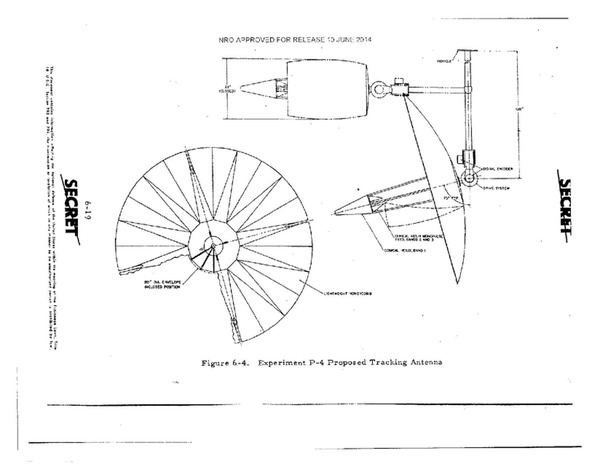 |
In addition to the large KH-10 optical system, MOL had several other intelligence experiments planned: electronic signal detection, multiband spectral observations, and ocean surveillance. According to newly declassified illustrations from the MOL program, the electronic intelligence (elint) and ocean surveillance missions appear to have remained secondary MOL objectives at least until sometime in the late 1960s, if not all the way through to the program’s cancellation in summer 1969.
One newly declassified illustration depicts a set of large pole-mounted antennas deployed from underneath the MOL. Another illustration shows this and several other antennas, as well as a possible astronomy mission that could have been performed by turning the MOL 90 degrees from the Earth, toward the stars. Yet another illustration depicts a deployable dish antenna for the P-4 experiment, and labels it a “tracking antenna.” Another antenna, whose label is blacked out, was probably a radar. After all, the P-13 experiment was ocean surveillance and a radar for looking for ships was a logical way to conduct this mission.
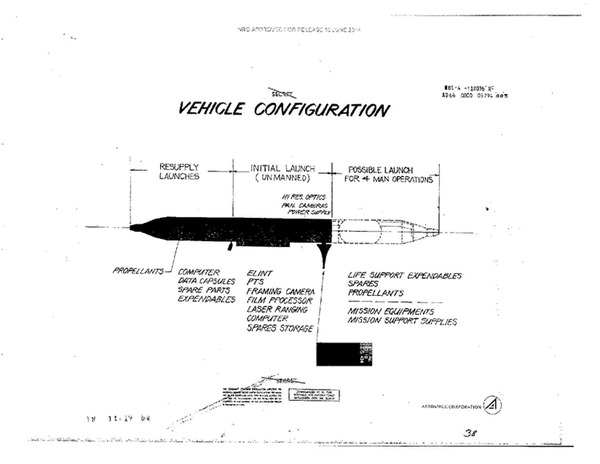 |
During the past twenty years the National Reconnaissance Office (NRO) has released a tremendous amount of information on photographic intelligence and far less on signals intelligence (sigint), including electronic intelligence. The primary purpose of American robotic elint satellites during the 1960s was to locate, pinpoint, and characterize Soviet air surveillance and missile defense radars. The NRO launched numerous small satellites, and a few larger ones, throughout the decade to collect this intelligence. One of the major unknowns about sigint during the 1960s is the frequencies that various systems covered. As a result, it is difficult to understand what the different satellites’ objectives were.
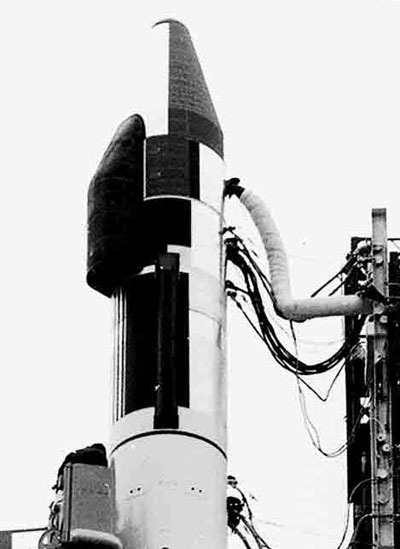 The United States operated a series of large low Earth orbit signals intelligence satellites in the late 1960s. It is unclear how MOL would have competed with them. (credit: USAF) |
The limited information on MOL’s possible elint equipment makes it difficult to understand what MOL possibly could have done that robotic satellites could not. MOL had a lifetime of about a month, which was less than robotic sigint satellites of the late 1960s. One of the keys to collecting signals intelligence is perseverance: i.e. listening for a long time until you hear something interesting. MOL was not a good platform for that. However, MOL’s elint antennas may have been intended to determine if there was any valuable elint to be gathered in the same locations as the photographic targets.
Now that significant amounts of material on MOL is being declassified after 45 years, it will soon be possible to gain a more complete understanding of what MOL was supposed to do and, hopefully, why it was canceled.
